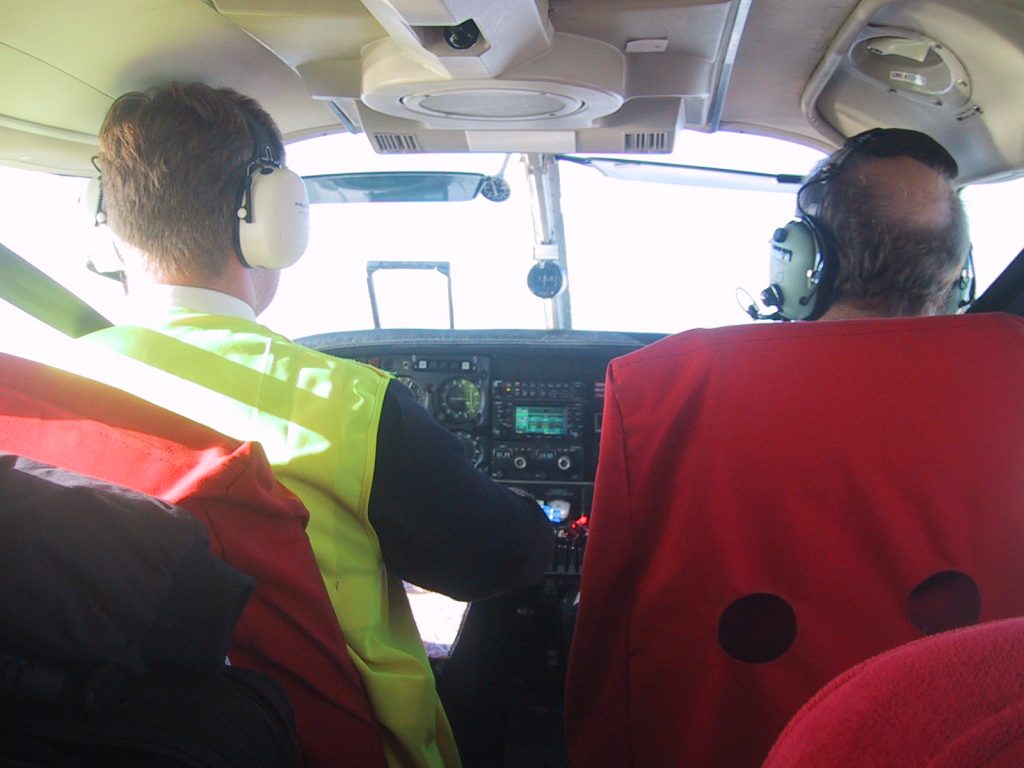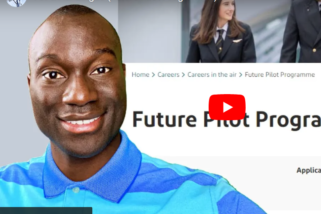A poll conducted by FTN has revealed that nearly half of the UK’s flight training schools are actively recruiting flight instructors, supporting the anecdotal evidence of an instructor shortage. Meantime, schools providing flight instructor training courses have reported a marked downturn in demand from potential instructors, some have seen virtually no new intakes in the last six months. It would seem that the professional pilot shortage is now extending into the world of instructing.
A career as a PPL Flight Instructor (FI) has never been highly paid. The average wage that an FI can expect to earn when teaching PPL students is around £25 per flying hour. Even in the height of summer, FIs are unlikely to manage to conduct more than five lessons per day, and when factoring in the vagaries of the British weather that the rest of the year brings, an income of £20,000 – £25,000 is about as much as they can realistically expect to earn until they can graduate to teaching for commercial licences.

Historically this hasn’t been a major issue, as pilots who were looking for a career with an airline would first become FIs in order to build flying hours, until reaching a level that would make them eligible for a job in business aviation or with a regional airline, before moving onto jet airliners. The advent of integrated, one-stop commercial flight training programmes has partially removed this requirement however, and while the so called FI ‘self-improver’ route still exists, a significant proportion of commercial pilot graduates are nowadays taking up positions with airlines straight out of flight school.
The flight training industry is now facing a perfect storm, with fewer prospective airline pilots becoming FIs, and many experienced FIs being ‘poached’ by airlines who have developed an appreciation for their aircraft handling skills and captaincy experience. The result is that professional flying schools in particular are struggling to recruit enough instructors and there are concerns that schools may have to start limiting their student intakes. Career FIs are becoming a scarce resource and so the conundrum facing schools is where do they resource instructors from? One potentially abundant source is the flying club stalwart – a PPL holder with decades of flying experience who wishes to ‘put something back’ into the industry, without needing to make a living wage out of instructing. The problem that arises for these pilots, however, is the requirement for them to pass Commercial Pilot Licence (CPL) theoretical knowledge exams in addition to passing a Flight Instructor Course. Judging by the low up-take of FI courses, it appears that this may be too much of a burden for many prospective instructors.
Under current European Aviation Safety Agency (EASA) flight crew regulations, pilots wishing to become instructors must first pass 13 CPL theoretical knowledge exams. This wasn’t always the case and for many decades UK PPL holders could become FIs solely by passing a Flight Instructor Course. In the early 1990s the regulations began to change, first with UK recognition of the International Civil Aviation Organisation (ICAO) recommendation for an instructor to hold at least a CPL, and then at the turn of the century with EASA’s predecessor – the Joint Aviation Authority (JAA) – imposing the requirement for FIs to hold a full CPL into European rules.
Prior to the adoption of JAA regulations during 1999 – 2001, the UK Civil Aviation Authority filed a difference with ICAO, deciding not to mandate the CPL requirement for FIs. Instead, in the early 1990s the Authority created a new standalone licence named the ‘Basic Commercial Pilot Licence’ (BCPL), aimed specifically at FIs. The CAA have told FTN that they did this as they held “significant concerns” about the knowledge and teaching standards of PPL instruction being delivered by non-commercially rated FIs at the time and it was hoped that the BCPL would bring about the desired improvement in teaching standards. FTN understands that there was also a political desire to align UK rules more closely with ICAO standards.
Early 1990s regulation meant that all UK PPL FIs had to gain a BCPL, which required passing a commercial flight test with a CAA staff examiner. Instructors teaching BCPLs at the time have told FTN that they witnessed a significant number of FIs giving up on their teaching careers as a result, unwilling to undertake additional expensive training and testing in order to continue doing a job that they were often largely doing part-time just for the pleasure of it. As a result, a whole generation of experienced PPL instructors were lost to the UK flying training industry.
When the UK adopted EASA flight crew regulations in 2012, the rules changed again and an FI now no longer has to hold a CPL or BCPL, with CPL theoretical knowledge becoming the new minimum standard. Nonetheless, the requirement to pass 13 additional exam papers still appears to be putting pilots off becoming FIs and industry experts have long questioned the relevance of such knowledge for instructors in the first place. A significant amount of the CPL theoretical knowledge areas hold little relevance to the type of skills and knowledge that FIs are passing onto their students. Additionally, the number of commercial flight training schools offering CPL theoretical knowledge courses has dwindled over recent years, with schools instead concentrating solely on full Airline Transport Pilot Licence (ATPL) exams – a step-up from CPL knowledge – and so even getting a place on a CPL theoretical knowledge course is becoming a challenge. Alternatively, a prospective FI has to complete the ATPL theoretical knowledge, which has even more subject matter of no relevance to ab-initio flight instruction.
FCL.915 Flight Instructor Certificate – pre-requisites:
An applicant for an FI(A) or FI(H) certificate shall:
(1) Have received at least 10 hours of instrument flight instruction on the appropriate aircraft category, of which not more than 5 hours may be instrument ground time in an FSTD.
(2) Have completed 20 hours of VFR cross-country flight on the appropriate aircraft category as PIC; and additionally, for the FI(A):
(1) hold at least a CPL(A); or
(2) hold at least a PPL(A) and have:
(i) met the requirements for CPL theoretical knowledge, except for an FI(A) providing training for the LAPL(A) only; and
(ii) completed at least 200 hours of flight time on aeroplanes or TMGs, of which 150 hours as PIC.
(3) Have completed at least 30 hours on single-engine piston powered aeroplanes of which at least 5 hours shall have been completed during the 6 months preceding the pre-entry flight test.
(4) Have completed a VFR cross-country flight as PIC, including a flight of at least 540km (300nm) in the course of which full stop landings at 2 different aerodromes shall be made.
Additionally, for the FI(H), the applicant must have completed 250 hours total flight time as pilot on helicopters of which:
(1) at least 100 hours shall be as PIC, if the applicant holds at least a CPL(H); or
(2) at least 200 hours as PIC, if the applicant holds at least a PPL(H) and has met the requirements for CPL theoretical knowledge.
It would appear that regulators are listening to industry’s concerns however, and that the lack of relevance of some of the CPL subjects to FIs has not been lost on them. The CAA has informed FTN that there is a Technical Review currently underway at EASA, looking at the potential development of a new set of theoretical knowledge exams specifically for FIs and FI Examiners: “Although we agree with the principle that the Instructor has greater knowledge than the student, the CPL TK does need to be changed to make it more relevant to the types of flight that the candidate will be conducting; for example single pilot operations and flight instruction,” a CAA spokesperson told FTN.
Concerning the increased difficulty in gaining access to a CPL course, industry experts have suggested that perhaps the requirement should be done away completely and that this additional knowledge requirement should instead be incorporated into the Flight Instructor Course as an add-on module for those who have not passed CPL or ATPL exams.
While these potential changes are being considered by the flight training industry’s regulators, the Honourable Company of Air Pilots (The Air Pilots) has meantime announced that is continuing to underwrite a Flight Instructor Apprenticeship scheme.
The scheme was first launched under a Government initiative to develop apprenticeships within the City of London Livery movement, of which The Air Pilots is a member. The Air Pilots developed the flight instructor apprenticeship-training framework and in 2014 the Government funded two ‘pathfinder’ apprenticeships, which were conducted with FTA Global based at Shoreham Airfield.
Government funding then ceased, but The Air Pilots and FTA Global report that they were so impressed with the scheme that The Air Pilots Benevolent Fund agreed to pay for a further two flight instructor apprenticeships in 2016. According to Roger Gault from The Air Pilots, the apprenticeship scheme has now matured to a level where they wish to extend it out to the flight training industry in general and are offering two apprenticeships for 2018.
“FTA global remains committed to the programme but The Air Pilots are keen to expand the scheme to involve other ATOs. Initial discussions on the scheme have taken place with The Pilot Centre at Denham, Booker Aviation at High Wycombe, Synergy Aviation at Fairoaks and the West London Aero Club at White Waltham. Any other ATOs wishing to participate in the scheme should contact the Air Pilots,” said Roger Gault.
Expanding on the apprenticeship scheme, Roger Gault told FTN: “As an apprentice you will be employed by an Approved Training Organisation and flight instructor training will be provided at no cost to the apprentice. Following the one-year-apprenticeship training programme, your only commitment would be to continue working for the ATO as a Flight Instructor for a further two-year period.
“The Air Pilots will support your training by providing a sum of £5,000 to the ATO that provides your flight instructor training. In addition, experienced pilots and flight instructors from within the membership of The Air Pilots will provide additional training lectures on a variety of extra topics such as ‘the psychology of the debrief’. Throughout the apprenticeship, The Air Pilots will provide mentors to support both the apprentice and the ATO. On completion of the one-year apprenticeship, The Air Pilots will conduct an End Point Assessment to confirm the required standard has been achieved.”
FCL.930 FI — Training course
Applicants for the FI certificate shall have passed a specific pre-entry flight test with an FI qualified in accordance with FCL.905.FI(i) within the 6 months preceding the start of the course, to assess their ability to undertake the course. This pre-entry flight test shall be based on the proficiency check for class and type ratings.
The FI training course shall include:
(1) 25 hours of teaching and learning;
(2) in the case of an FI(A) and FI(H), at least 100 hours of theoretical knowledge instruction, including progress tests;
(3) in the case of an FI(A) and FI(H), at least 30 hours of flight instruction, of which 25 hours shall be dual flight instruction, of which 5 hours may be conducted in an FFS, an FNPT I or II or an FTD 2/3;







